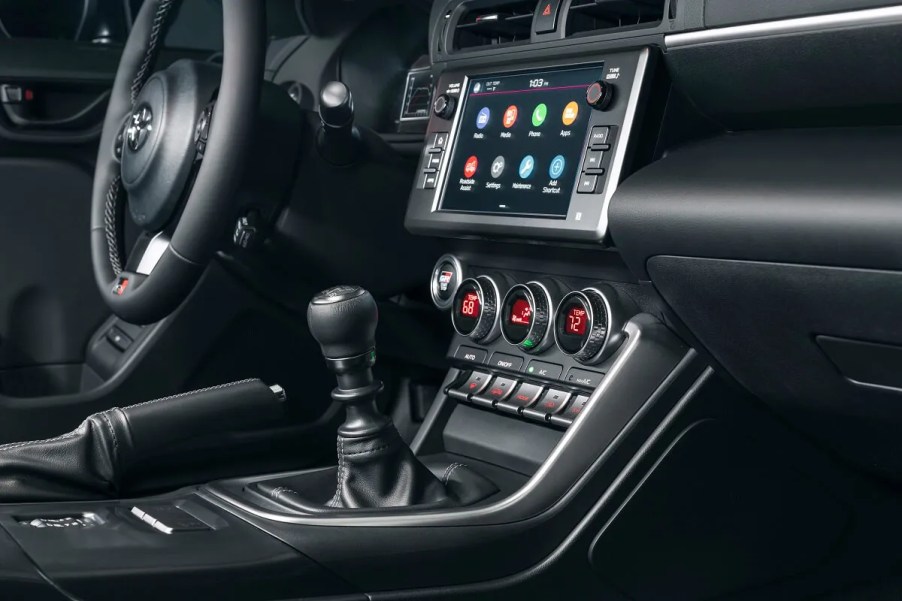
Surprising Study Reveals Younger Drivers Are Saving Manual Transmission Cars
Oh, the manual transmission. We car lovers talk a lot about the fading of the third pedal in new cars. It feels like every year, we lose the manual in another new car model. There are a few holdouts, like the Jeep Wrangler and Mazda Miata, that are still going strong, but the now-antiquated gear shifter is a properly rare feature in new cars. Car journos and automotive dorks everywhere have been bleating about this decline for years. Still, we can’t fuss anymore because a new study from CarMax shows that new manual car sales are up and have been on the rise since 2021 and we have younger drivers to thank for saving manual transmission cars.
Did We Do It? Did We Save the Manual Transmission?

CarMax sold 1,630,550 vehicles in 2021. In 2020, 2.4% of all the cars sold at CarMax had manual transmissions. By 2021, that percentage grew to 2.8%. 2022 saw that percentage continue to climb to 2.9%. While that percentage is still quite small, it is an upward trend of more people choosing manual cars. This is what we all have been hoping for for years.
While that percentage is small, we also have to consider that more manual cars are selling at the same time that EV sales are also ramping up, as many new exciting models hit the market over the past few years.
How many people can still drive stick?
Most estimates say that roughly 20% of Americans can still drive a stick shift car. Interestingly, the report shows that of CarMax customers who bought a manual car, the majority were younger males. In fact, manual buyers are four years younger on average than the overall average CarMax customer. This means that younger people are doing the heavy lifting to save manual transmission cars.
“At CarMax, we’re committed to helping customers find the vehicle that best supports their lifestyle,” says Mark Collier, Regional Vice President General Manager at CarMax. “Customers have expressed interest in manual transmission vehicles due to a variety of factors, including nostalgia and throwback culture, and we often see those in the market to buy a sports car are looking for a manual transmission. We’ve also heard from parents car-shopping for their teens that they find stick shifts appealing because it requires the use of both hands, which may serve as a deterrent for texting while driving.”
This is fascinating. Millennials are buying manual cars because it reminds them of their teen years. Nostalgia culture is a growing desire. As the world grows more discontent, violent, and overwhelming, many millennials are turning to the safety of nostalgia. These old ’80s and ’90s cars remind us of simpler, cheaper, easier times. Similarly, even Gen Z is adopting these nostalgic trends in everything from music to fashion and even cars.
It has been a common complaint for older enthusiast drivers to blame the disappearance of the third pedal on the youths. However, this CarMax report shows that older buyers are going for the automatics, EVs, and CVTs.
What is the most popular car with a manual transmission?

CarMax found that the manual transmission car it sold more than any other was the Honda Civic. Where once people bought manual cars because they were a cheaper option, that is no longer the case. Manual cars can, in certain circumstances, come at a premium. Even in a base model with a manual transmission, more people are buying out of preference over it being a base model feature.
What is a manual transmission?
What makes a manual transmission different from an automatic is that manual transmissions require the driver to manually engage the clutch with a third pedal and manually shift gears for the transmission. In automatics, the transmission automatically engages the clutch and picks the proper gears based on the computer reading the rpm of the engine.
Manual gearboxes are simpler and cheaper to make than automatics, which is why this was known as “standard shift” for so long. The driver has far more work to do in a manual car than an automatic, but many drivers prefer having the added control over the car’s gear changes and power delivery.
Are manual transmissions older than automatic transmissions?
Contrary to popular belief, the world’s first car, the 1886 Benz Patent Motorwagen, was an automatic CVT. However, this transmission was clunky and slow. Nearly 10 years later, the first manual transmission was developed. It was a huge success. The manual gearbox required far more input from the driver but was more efficient, faster, and smoother shifting.
It didn’t take long for the manual gearbox to rule the world. For over 100 years, the manual gearbox was the most common transmission. That is surely not the case anymore and will likely never be the case again. However, we have blamed young people for the death of the manual gearbox, and according to this study, we not only owe them an apology but also owe them our gratitude.





